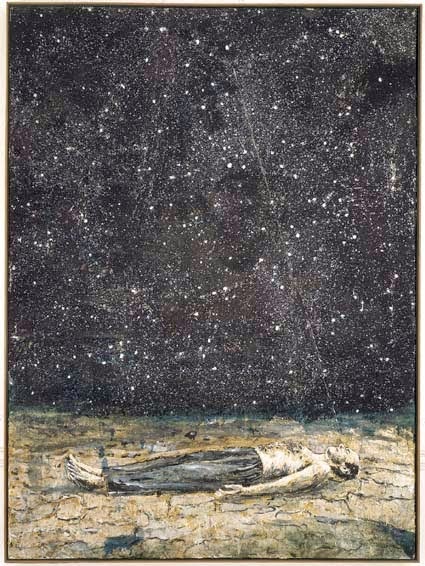I've spent much of the past month reading up on Soka Gakkai's Buddhism. This advocates a self-actualizing, pragmatic, and this-world orientation rather than an introspective, detached, and renouncing one. I'm curious about how its globalizing, humanistic, and multicultural aims might enrich my study of Buddhism in the West, and how it's marketed, transmitted, and adapted by seekers and scholars today.
You can find six basic works on its teachings in the past six entries on this blog (and Amazon US). What intrigues me, as a sympathetic skeptic, is how its message via medieval Japanese reformer Nichiren makes sense for those who join SG International today. SGI affirms, as do other sects of Nichirenism, a direct channelling of a cosmic life-force via an inscribed mandala, a
Gohonzon, and by recitation twice daily of a
daimoku invocation of to what these Buddhists regard as a mystic law. This law, excerpted in the
gongyo passages from the Lotus Sutra, is taken by believers to energize them and to bring about both "conspicuous benefits" in material gain and achieved results as well as more altruistic fulfillments leading to world peace, cultural enrichment, and environmental healing.
I began with Daniel B. Montgomery's
"Fire in the Lotus" about Nichiren, his times, and his followers. I then entered the academic survey
"Global Citizens" by Bryan Wilson, David Machacek, and colleagues which verified how initially converts often seek to gain material goods but then progress into less tangible but more lasting (perhaps?) gains in better relationships, communal harmony, and inner confidence. I also found out in
"Soka Gakkai in America" how perhaps 10% of members stick with the program, but how this committed core works all the more diligently in terms of an ethos aligned with American values, to generate visible results that better one's self and others for practical goals. Its members tend to come from creative, entrepreneurial, or corporate fields. They're open-minded, ethnically diverse, liberal or even (morally) libertarian, "post-materialist," bookish if wonky types. Finally, I learned how believers interviewed by leader Richard Causton in
"Buddha in Everyday Life" and academic observer Richard Hughes Seager in
"Encountering the Dharma" support the SGI ideals as beneficial to good works built on an earnest faith.
Still, none of the six works solved for me a problem. If you chant and you don't get what you want, what then? As with our hopes however secular or our prayers however sincere, we're left with what Robert Wright in
"The Evolution of God" calls "explanatory loopholes." No religion survives without qualifiers to its claims.
SGI-UK members report to Professors Wilson and Karel Dobbelaere how if they failed to get what they asked for in chanting, it was not meant to be, or they lacked faith, or the time was not right, or the request came about in an unexpectedly altered fashion. Of course, the scholar or skeptic might respond. W & D's
"A Time to Chant" briefly examines a sociological interpretation of what might be prevarication, compromise, coincidence. Causton's insider's view stresses the necessity for diligence, and he narrates inspiring accounts of those considerably beaten down by life who in chanting find renewal and hope. One haunted me: a man loses a child to stillbirth and then another's stricken by cerebral palsy. Other Job-like afflictions come, yet this man reasons that they all happened because this was the path by which he found his way to Buddhism.
No religion, even a technically non-theistic (in theory often more than practice as Rodney Stark's
"Discovering God" reminds us), can survive long except for intellectuals and a few hardy monastics. Ordinary folks need comfort, and SGI gives them a way towards buddha-hood in this life, not deferring it to an endless delay of rebirths as, say, Tibetan versions might present, or the conundrums of severe Zen, or even the more amenable self-reflections of "insight" Vipassana Buddhism deliver to many Westerners who cotton to analysis.
Yet I wonder, inescapably, how a system can lead to results. The fine print (you failed to believe enough; the time was not right; it may happen later but not when you asked) puts paid to the affirmations by SGI's millions that it works now and works reliably if only you are committed enough to make it happen by your diligence. This attitude fascinates me, as it's at odds with a lot of Buddhism I've been studying, but it remains for me a desideratum, with the same countercultural resonance that brings me back to 1972 when I saw the poster of
Desiderata on the wall of a hippie-ish pair of dog breeders my parents went to visit (on business) up by Big Bear. I wish SGI well and I understand it much better. It can't be reduced to a "personality cult" as media stereotypes have claimed as it spread from postwar Japan among blacks, Asians, and whites the world over. I take note of its reportedly transformational powers, even as inevitably my own intellectual distance persists. I wryly recall a bumper sticker no car dares sport in my 'hood: "Nothing Fails Like Prayer."
This reading and reflection finds me at a very difficult time personally. The question mark, faint but indelible, imprints itself on my soul or spirit or mind. Maybe Providence might have played its sly role, speaking of coincidence or there are no coincidences, via the professor at San Jose State who after my talk on Maura O'Halloran's Irish Zen quest introduced herself as an SG member, who'd gained her doctorate in Ireland.
I never knew SGI existed there; Laurence Cox and Maria Griffin's newest research on Irish Buddhism alerts me in a note (on pg. 48) that a temple had existed in Dublin a while ago, and its membership's as in many lands a combination of multicultural immigrants and emigres from Japan with natives. The professor at SJSU told me that they numbered now around 300, doubling from mid-decade. While I had mentioned Daisaku Ikeda's claim in my "Celtic Buddhism" essay (pg. 69 of
ibid, "
Ireland's New Religious Movements") that the dharma had perhaps been transmitted via Alexandria to the ancient Western realm, Cox & Griffin's earlier article, which I had consulted in my own research, had not included SGI. So, thanks to her (I'll keep her anonymous) for alerting me to this presence, and for encouraging another direction for my research.
This blog entry's title comes via its own detour. On John W. Smart's political site, I'd posted at
"Eyes of Newt" Gingrich's
explanation of his conversion to Catholicism. I'd added that the legions of JWS's liberals and Newt detractors might consider the 150+ comments, as they comprised a perfect cross-section of pro-con reactions to Newt's decision. I encouraged JWS's political junkies to consider how the remarks boded well or not for his campaign, as economically and ideologically (contrary to past patterns or persistent stereotypes) Catholics represent a perfect sample across the voting spectrum and class system in our nation.
"Sophie," who shares my own ethnic background and my marital blending, replied how one commenter had cited of all converts Hilaire Belloc. I posted about him, with a bit of surprise that anyone knew of this doughty Catholic apologist of nearly a century ago, and she commented on his prescient perspective on the rise of Islam in Europe. Anyhow, I then told her I'd been a cradle Catholic but had wound up walking on my own, and she mentioned how hard it had always been politically or spiritually "
to think myself into certitude." I concur, and it seems the perfect phrase for me to typically adopt or pause upon in my own endless search.
As I wrap this up along with a challenging 2011, it occurs to me how that installation depicted here resembles a
butsudan, the cabinet housing for Nichiren Buddhists not an icon of Shakyamuni, but instead, in its denomination's reforming and aniconic light, the written scroll itself. In that, it reminds me of a Torah, and a synagogue faithful in its lack of figurative art to the First Commandment. I chose the illustration before I knew what I'd write today, and it shows its own coincidence, or lack of such. It also aligns with its artist's own mission for "active engagement" rather than a separate "work of art." For Nichiren's followers hold that the Buddha to be followed, not as an object of veneration so much as a mirror of one's own buddha-hood, is not a statue or an amulet anymore, but truly within one's self, as one finds and shares self-realized en
lightenment.
Illustration by Julius Koller. Tate Gallery information:
Question Mark b. (Anti-Painting, Anti-Text) 1969
Otáznik b. (Anti-Obraz, Text-Obraz)
Latex paint on wood. Object: 50 x 500 x 330 mm. Sculpture, T13312.
Described by the artist as an ‘anti-painting’, this object was made using a wooden tray, which he covered in white latex paint. Koller’s techniques and choice of materials were intended to position his work as an active engagement with everyday life, rather than existing as a separate ‘work of art’. The question mark inscribed upon the object’s surface was a recurring motif in Koller’s work, reflecting the atmosphere of uncertainty in his native Czechoslovakia during the years of Communist rule.
































